Tulips in poetry and legends
The tulip originally grew as a wildflower in central Asia and has been venerated for centuries in the culture of the region. The writings of 13th-century Persian poet Saadi of Shiraz are filled with references to the flower, which, according to legend, was created by the lovesick tears of a Persian youth. After rejection by the object of his affection, he stumbled into the desert and, as each tear fell, a tulip sprang.
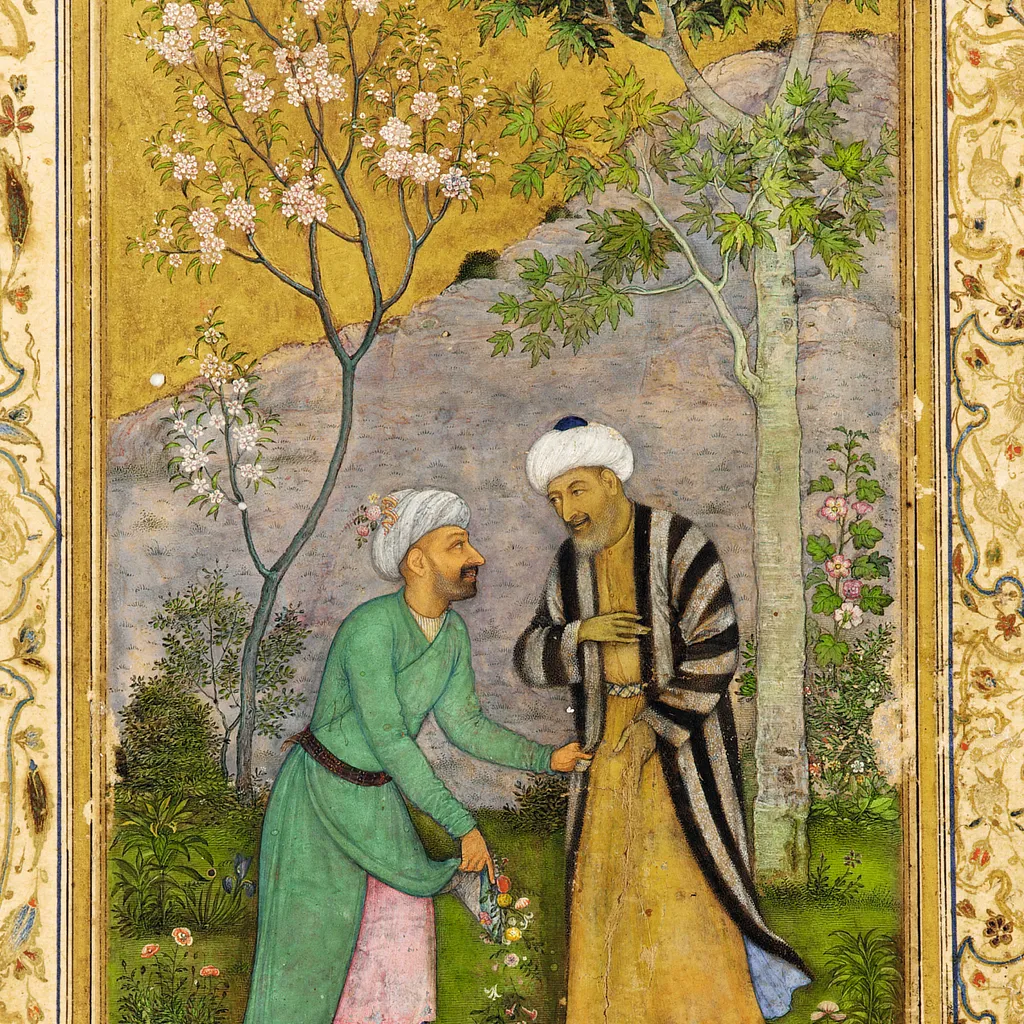
Tulips in textiles
The sultans of the Ottoman Empire were so enamoured of the tulip that they filled palace gardens with these bright, colourful blooms. The tulip became the emblem of the ruling house of Osman and was widely used as a motif in Turkish textiles, carpets and ceramics: luxurious goods that were prized at home and also traded in other parts of the world. The hanging below is made from silk embroidered on linen and features a repeat pattern of the tulip. It was made in the early 18th century – a period of great wealth and prosperity for the Ottoman Empire, which came to be known as the ‘Tulip Era’.

Tulips in museums
Last year, British artist Gavin Turk curated an exhibition exploring the historical trading links between Europe and the Middle East through the medium of the tulip. ‘Turkish Tulips’ considered the impact on 17th-century Europe of the flower’s arrival. Shown at the Museum Van Loon, Amsterdam and The Bowes Museum, County Durham, it also celebrated the tulip’s dominant place in the arts, as seen here in Tulips After Van Brussel by Sir Peter Blake.

Tulips in ceramics
As well as adorning textiles, the curving form of the tulip was commonly used as a decorative motif on ceramics. This glazed earthenware platter from the Louvre features a central design of tulips and carnations and was made in Iznik, Turkey c1560–80. Iznik pottery was produced between the 15th and 17th centuries and fused traditional Ottoman design with elements taken from Chinese blue-and-white porcelain, which was much admired at the Ottoman court.
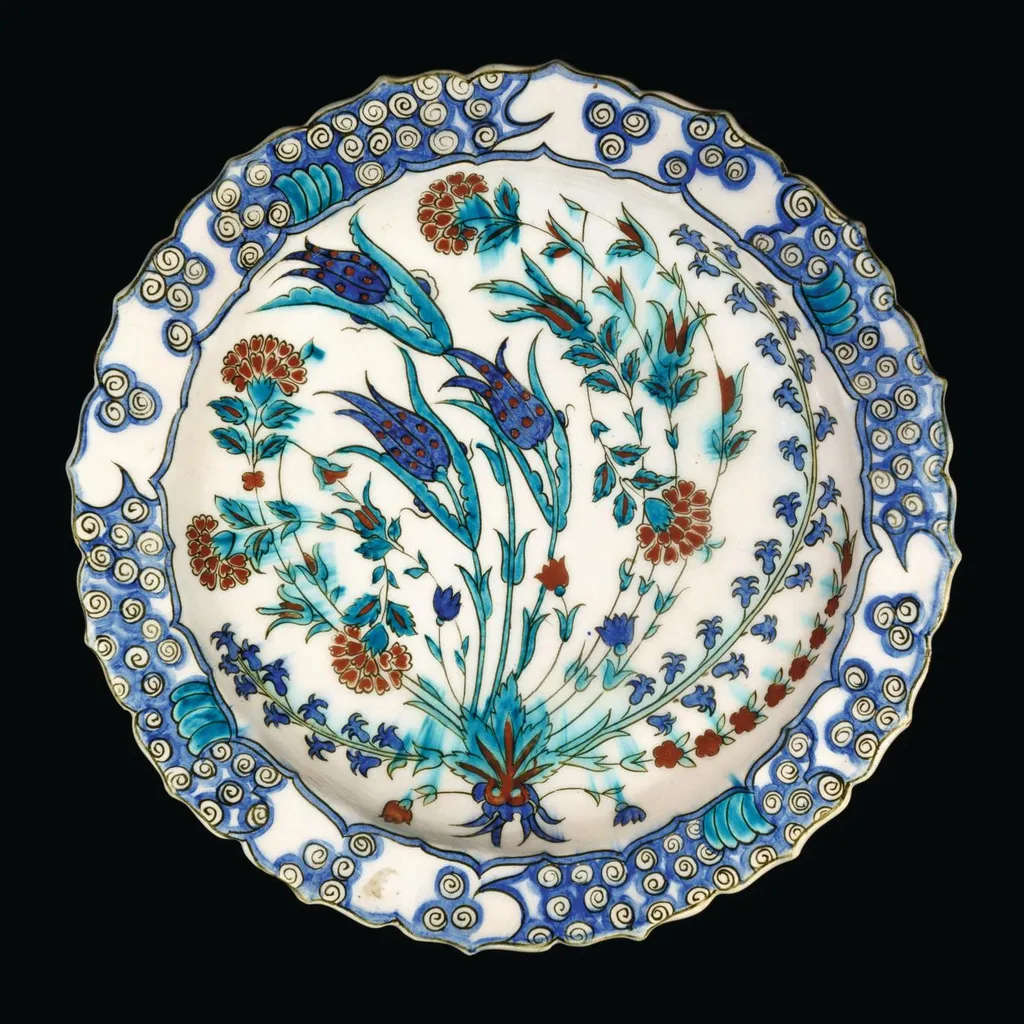
Growing tulips
Tulips were first cultivated in Europe by the botanist Carolus Clusius. His crop of tulips from the gardens of Leiden University’s Hortus Botanicus in 1594 was the first to be grown on Dutch soil, setting in motion a chain of events that changed The Netherlands’ history. It was he who first studied the phenomenon of the usually solid-coloured blooms sometimes appearing streaked, which became some of the most sought after. It wasn’t until the 1920s that this striation was discovered to be caused by the virulent ‘tulip-breaking virus’.

Tulips in William Morris designs
The designer William Morris was inspired by the symmetry and ordered patterns of Islamic art as well as its depiction of plant forms. He admired Persian carpets and would often visit the Victoria and Albert Museum to view the Ardabil Carpet, made in Iran c1539–40. Morris incorporated tulips into many of his designs for wallpaper and fabric, often intertwining them with a partner plant such as the willow, rose, lily or peony. This ‘Tulip’ wallpaper frieze (from the V&A’s collection), beautifully shows the influence of Islamic design on his work.
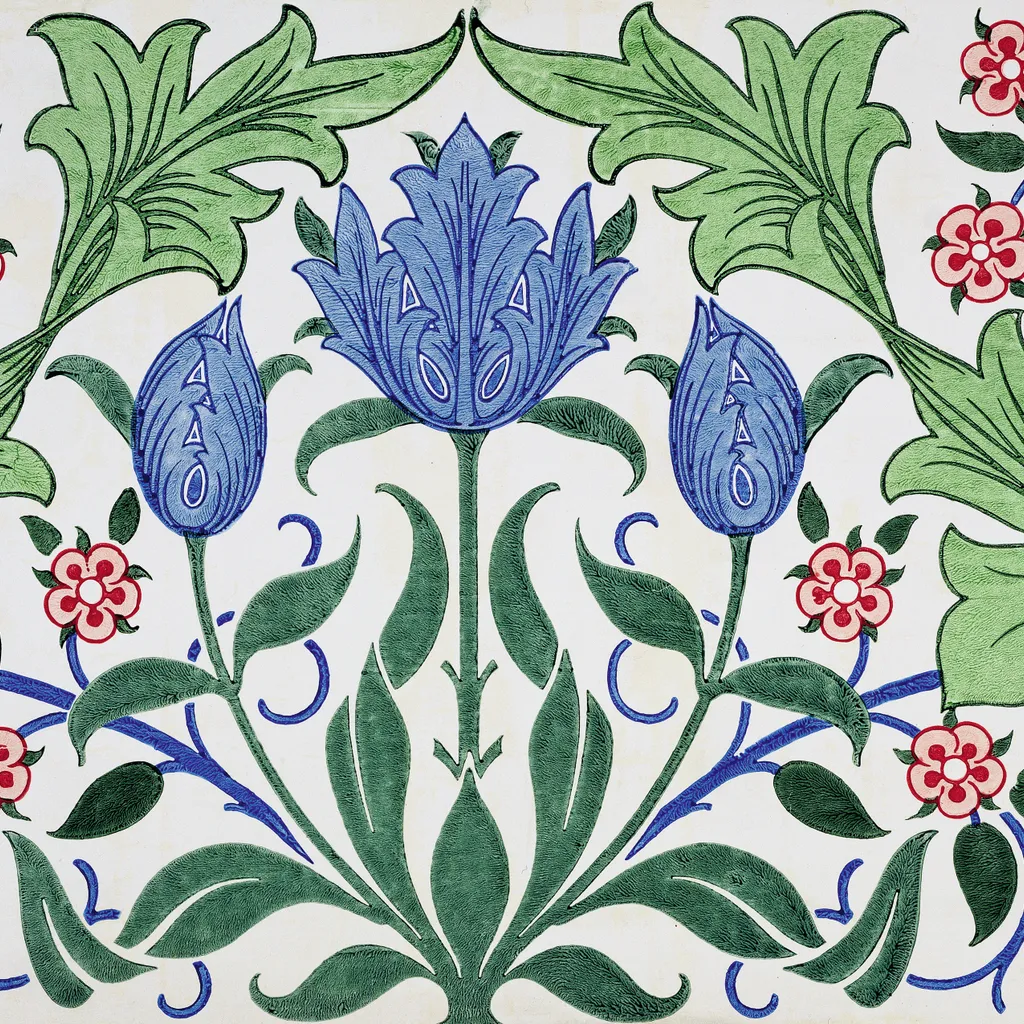
Tulips in furniture design
Eero Saarinen was a FinnishAmerican architect, designer and former sculptor, who was irritated by the forest of furniture legs to be found in the dining room. ‘The undercarriage of chairs and tables in a typical interior makes an ugly, confusing, unrestful world,’ he once said. His solution was to design a pedestal chair – with accompanying table – that, due to its shape, became known as ‘Tulip’. Designed for Knoll in 1955–6, and made from the wonder-material of the time – plastic – it became a design classic and is still manufactured today.
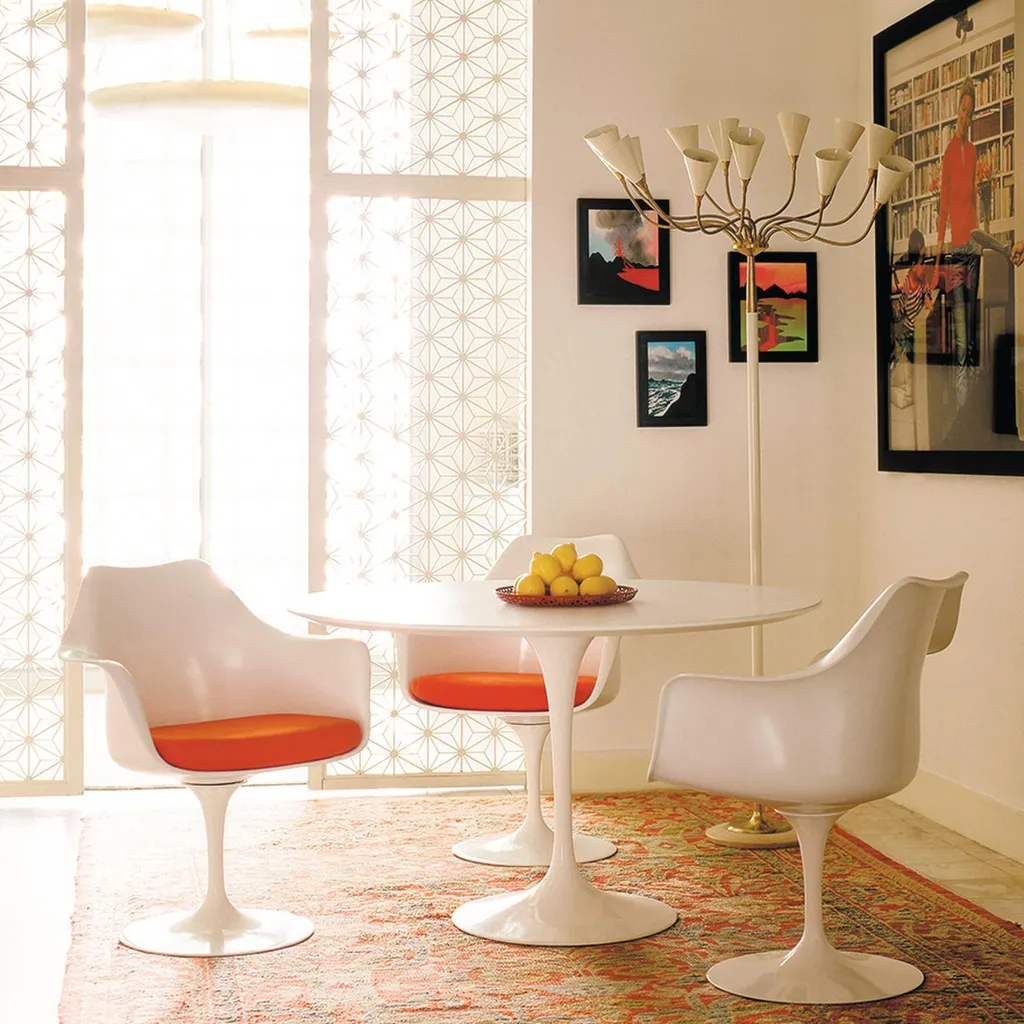
Tulips in home decoration
In the 17th century the tulip was a luxury item, becoming an obsession and status symbol among the wealthy Dutch elite. It wasn’t long before delftware tulipieres became the must-have decorative item. These specially designed vessels allowed people to raise a flower from a bulb in their homes, while also showing off their affluence. Due to their expense, bulbs were bought individually, so if your tulipiere was designed to hold a large number, like this example, you clearly had guilders to burn.
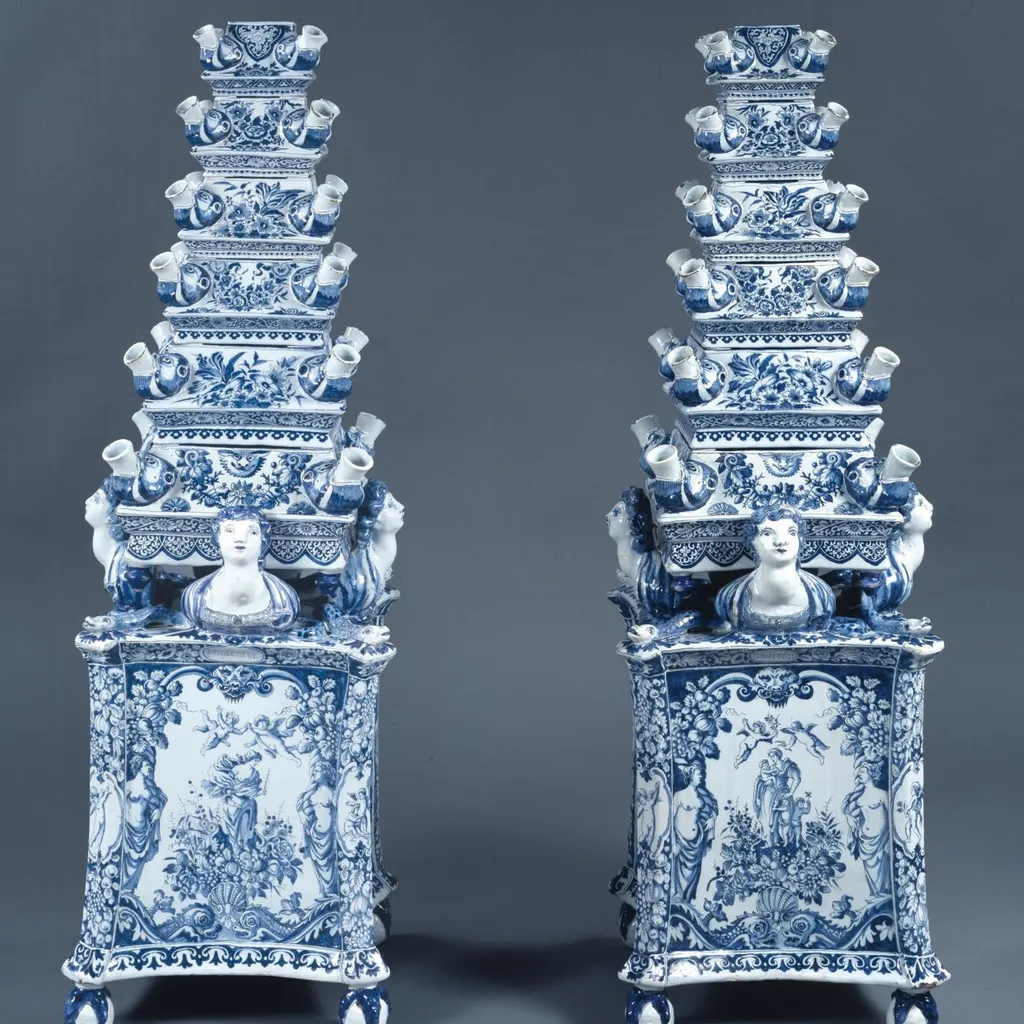
Tulips in still-life paintings
In The Netherlands at the beginning of the Dutch Golden Age, tulips were so admired, they were often featured in the still-life paintings of top Dutch artists (such as this one pictured, Floral Still Life by Hans Bollongier, 1639). They were sometimes shown alongside jewellery and diamonds to indicate their worth. In the 1630s, people began to invest in tulips, and a frenzy of buying and selling ensued. At this point some bulbs were selling for 10 times the annual salary of a skilled worker but, in 1637, it all came crashing down when the bottom fell out of the market, bringing an end to ‘Tulip mania’, which is referred to as the world’s first economic bubble.

Growing tulips
No one knows for sure who brought the first tulips from central Asia to Europe, but one story suggests it was Flemish diplomat Oghier Ghislain de Busbecq who, in 1554, was sent as an ambassador to the Ottoman court, under the rule of Suleiman the Magnificent. Once the flowers arrived on Dutch soil and Carolus Clusius took an interest, tulip-growing developed into an industry that never went away. The Netherlands remains the world’s largest grower and exporter of tulips, producing three quarters of the world’s supply – close to two billion bulbs a year.
